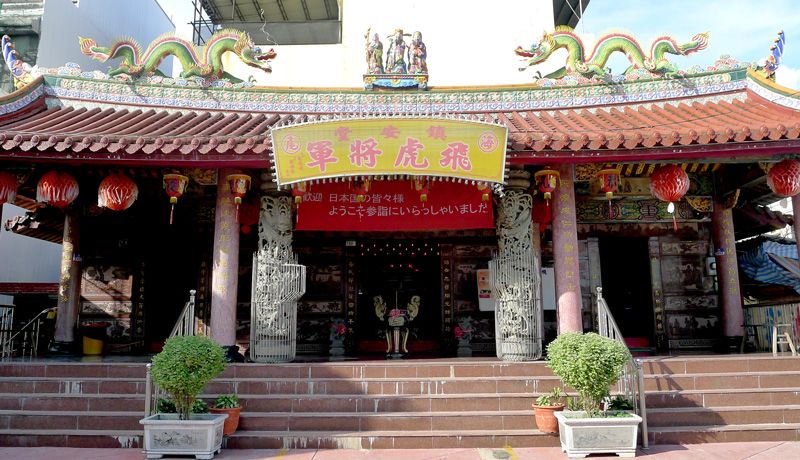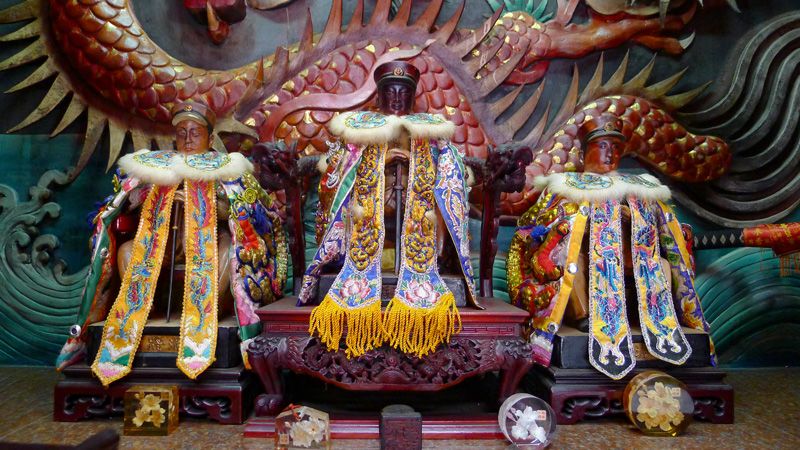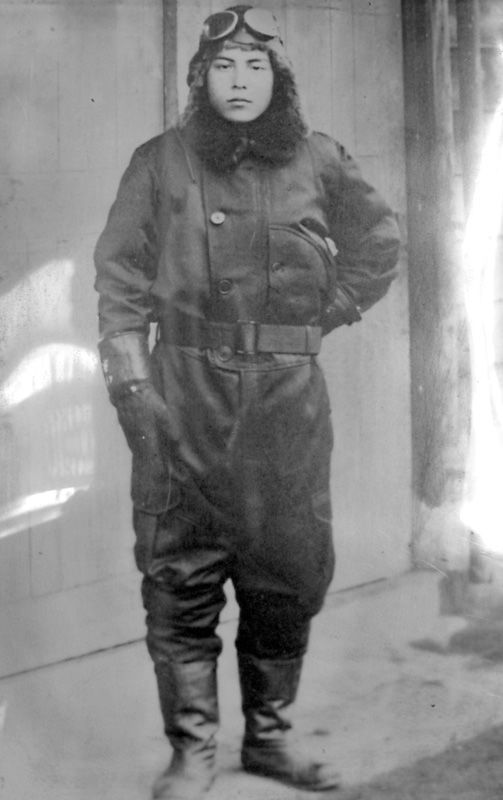An Act of Compassion
Worshipers at Zhenan Temple in Taiwan pay homage to an unusual hero. Located on the outskirts of the historic southern city of Tainan, the sanctuary enshrines Sugiura Shigemine, a young Japanese fighter pilot whose courageous act during a fierce air battle led to his recognition as the deity Feihu Jiangjun, or General Flying Tiger.


A red banner at the entrance of the sanctuary bears a Japanese message welcoming visitors from Japan.
Taiwan’s blend of ancestor worship, reverence for nature, and rich history and culture has produced a diverse pantheon of gods, including deified war heroes, police officers, and missionaries. Shrines and monuments dedicated to Japanese are not unheard of, though none receive the level of devotion residents of this Tainan neighborhood award the tutelary General Flying Tiger.
Zhenan Temple is largely indistinguishable from other Taoist shrines that dot the Taiwanese landscape, save for a red banner proclaiming in Japanese: “Welcome to worshipers from Japan.” There was no banner when I first visited in 1997, but even then it was easy to sense the goodwill locals have toward Japan from the warm hospitality of the people I met.


Decorated statues of General Flying Tiger.
In the center of the hall sit three elaborately decorated statues of the deified Sugiura: a main image flanked by two figures used for special occasions. Zhenan Temple is somewhat unusual for enshrining only one god. What really makes it a rarity, however, is that the deity used to be a Japanese fighter pilot.
A Crucial Decision
A Crucial Decision
Sugiura was born in Mito, Ibaraki Prefecture, on November 9, 1923. As a youth he joined a pilot training program at the Imperial Navy’s Kasumigaura air base, where he learned the basics of flying. After graduating he was sent to Taiwan for advanced training.


Sugiura’s older sister left this photo of her brother during a visit to Zhenan Temple.
During World War II Taiwan was a strategically important launch point and supply center for Japan’s southern campaigns. As Allied forces moved to retake the Philippines, they brought their firepower to bear on bases in Okinawa and Taiwan in a bid to cripple Japan’s air capabilities.
On the morning of October 12, 1944, aircraft of the US Third Fleet conducted a heavy attack on Japanese military facilities in southern Taiwan. Sugiura took to the sky as part of the outgunned Japanese defensive and was hit by Allied fire. Belching smoke and flames, his Model 32 Zero fighter hurtled toward a small coastal village. In a desperate attempt to avoid the settlement the young pilot pulled the nose of the plane up, crashing the crippled aircraft in a nearby field.
Zhuang Zhenghua, one of many locals who vividly recall the fierce air battle, saw the plane as it came down. By his account Sugiura could have saved himself by ejecting from the craft, but chose to save the village by remaining at the controls.
Wu Chengshou, a devout follower of General Flying Tiger, was also present that day and remembers seeing Sugiura’s body at the crash scene lying near his twisted aircraft. According to Wu, the remains had been mangled in the impact and bore bullet wounds from the battle. The only clue to the identity of the aviator was the name Sugiura written on his boots. The body of the 20-year old was recovered by the Japanese military and later honored in group services in Taiwan and his native Mito.
Resource:
24/3/2017 : 4.20 pm



No comments:
Post a Comment